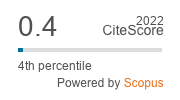Investigations on parasites and predators of some major forest insect pests in India.
DOI:
https://doi.org/10.33307/entomon.v1i1.1126Abstract
Natural enemies of Adelges spp., Pineus laevis Maskell, Lymantria obfuscate WIk., Hypsipyla robusta moore, Petrova Cristata' (Walshingham), Dioryctria spp. and Sire X spp. have been investigated in India with a view to possible biological control of the same or related forest insect pests in various parts of the world. About 50 predatory species attack Adelges and some of these have been introduced into Canada and the U.S.A., but without success. Predators of P. laevis occurring in India are worth trying against Pineus pini (L.) in East Africa and Hawaii. L. obfuscate has a large complex of hymenopterous and dipterous parasites, some of which are common to L. dispar and occur also in Europe and other areas. A number of Lymantria parasites from India are now being bred in the U.S.A. for release against L. dispar. H. robusta is attacked by over 50 species of parasites and several of these have shipped to Trinidad and from there to the Windward Islands, British Honduras, Brazil and Mexico for trial against Hypsipyla grandella Zeller. Trichogrammatoidea robusta Nagaraja has become established in Trinidad. The pine shoot borers P. cristata', Dioryctria sylvestrella complex, D. assamensis Mutuura, D. castanea Bradley and D. raoi Mutuura have a large complex of hymenopterous parasites. Many of these have only been identified generically and warrant more detailed studies to evaluate them. Rhyssa persuasoria himalayensis Wlk is a common parasite of siricids. In the light of the work already carried out in India various biocontrol possibilities against forest insect pests are discussed.
Downloads
Published
How to Cite
Issue
Section
License
Copyright (c) 2024 Association for Advancement of Entomology

This work is licensed under a Creative Commons Attribution-ShareAlike 4.0 International License.


